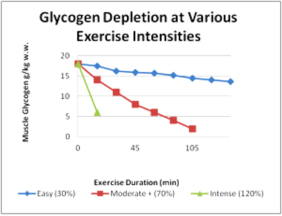It’s nothing monumental to hear that a balanced diet is the key to optimal nutrition. As discussed one of my previous articles in Cycling Utah, there are a lot of “fad” diets, with so much mixed information on the internet, and many personal opinions or anecdotal success stories about the best methods of eating. Whether it be low carb diets, juice cleansing, gluten-free, or any other “quick fix”, there are definitely pros and cons to each of them. The research behind their methods and results can be mixed, and the conclusions are often skewed to promote nutrition products or the company that is funding the research.
 The most challenging part of navigating all the nutrition information out there is the application to individual’s body needs, especially athletes. When fueling our bodies, taking anything to an extreme lends itself to creating a nutritional deficiency somewhere else. There are numerous macro- and micronutrients that work together to make our tissues, hormones, physiological systems, etc. function properly. The importance of balance and consistency in our food patterns applies to athletes especially, as nutrition directly affects performance in training and competition. The purpose of this article is to look at the science behind the ketogenic diet (KD) and propose an applicable and balanced nutrition plan, a KD for endurance athletes based on individual needs for training and racing, and overall long-term health.
The most challenging part of navigating all the nutrition information out there is the application to individual’s body needs, especially athletes. When fueling our bodies, taking anything to an extreme lends itself to creating a nutritional deficiency somewhere else. There are numerous macro- and micronutrients that work together to make our tissues, hormones, physiological systems, etc. function properly. The importance of balance and consistency in our food patterns applies to athletes especially, as nutrition directly affects performance in training and competition. The purpose of this article is to look at the science behind the ketogenic diet (KD) and propose an applicable and balanced nutrition plan, a KD for endurance athletes based on individual needs for training and racing, and overall long-term health.
What is the Ketogenic Diet?
The First Endurance website has an article entitled “Reviewing research aspects of the ketogenic diet on endurance athlete performance: should I try it out?” by Loulika Lili-Williams, PhD, which accurately defines the KD as a high-fat, low carbohydrate and protein sufficient diet. This article does a great job of describing how the KD has traditionally been used by dietitians and doctors in clinical settings to treat neurological disorders and errors in metabolism (i.e., diabetes). The method lends itself to the research that eating more fat than carbohydrates stimulates the body to oxidize fatty acids and use ketone bodies for energy. Thus, putting the body in a state of ketosis. As Dr. Lili-Williams summarizes from current research studies, the metabolic benefits to endurance athletes can include increased ATP and mitochondria production, efficient fatty acid oxidation, and maybe VO2 max increase. These are all desirable adaptations, but there are also studies that show the KD methods leading to dehydration and hypoglycemia, and decreased ability to maintain anaerobic workload. Go to firstendurance.com for more information on the specifics of the diet and the current science behind the ketogenic diet and affects on athletes.
To cover the basics macronutrients, fat provides energy during low to moderate intensity exercise (i.e., walking, jogging, easy cycling). At an endurance pace, we burn about 50% carbohydrates and 50% fats. The higher the intensity, the more carbohydrates we use. Until we are anaerobic, which is when lactic acid is generated, and only lasts ~15 seconds, then it’s back to carbs and fats for fuel (see figure below). Carbohydrates (CHO) are the body’s primary energy source during exercise. Dietary CHO (grains, fruit, starchy veggies, juice and sport drinks) are stored in the liver and in the muscle as glycogen.
During exercise, these glycogen stores fuel working muscles. How soon we run out of energy depends on workout intensity. So, hard and intense workouts decrease glycogen stores more quickly than moderate exercise bouts. Glycogen stores are limited, so during exercise lasting more than 60-90 minutes, consuming carbohydrate while exercising improves performance. More specifically, 30-60g of carb/hour will help keep you fueled and feeling strong. The standard recommendation is that endurance athletes need 50-65% of total calories from carbohydrates. That means the ketogenic diet, which can be 65% or more of total caloric intake from fat, is a huge deviation from that. This is where it is important to look at the individual athlete to determine what the ratios of carbohydrate:protein should be, because everyBODY is different. Not only do intensity and duration of workout determine macronutrient needs, but macronutrient percentages that work for some may be totally different for another depending on age, gender, fitness level, metabolic rate, training/racing calendar, and genetics.
Is the Ketogenic Diet Good for Endurance Athletes?
Based on the food science discussed so far, the question becomes whether or not the ketogenic diet is the best option for endurance athletes, especially because macronutrient needs can differ on a day-to day basis. It seems logical that sparing carbohydrates to promote fat burning could be ideal, and there is some validity to this, but we must look at each athlete as an individual. An athlete that does ultra-endurance activities, where they train and compete for long hours at low intensity would benefit more from a KD than an athlete that needs high end power for sprints and short duration intensity. As stated earlier in this discussion, long sustained efforts utilize more fatty acids for fuel, whereas short intense efforts rely almost solely on carbohydrates.
A modified ketogenic diet , as presented in this paper, is an attempt to find the best method to appropriately fuel an endurance athlete, with the mindset that we put the proper gas in our fuel tank to make our body engines achieve optimal results. Endurance athletes would do well on a 50:35:15 percent CHO:fat:protein ratio, respectively. That would be the lowest one should go in carbohydrates and protein but still get the positive ketogenic effects of utilizing fats, sparing carbs, and running that engine all day. Then, as the duration decreases and intensity of anaerobic efforts increases in training or racing changes, the KD could be adjusted to 55:30:15, 60:25:15, or 65:25:10 percents, respectively. This way, basing the diet plan on what the individual is doing will lend itself to optimal performance as well as long term health.
Fats and the Ketogenic Diet
Another benefit of the modified KD is the reduced chances of long-term negative effects of high fat diets. We’ve all heard the stories of super fit athletes that randomly die of a heart attack, which may be associated with high levels of visceral fat. Even if the body physique is lean to the outside perception, there can be fat on the internal organs, specifically blood vessels. More loosely, this describes the term “skinny fat,” which most athletes don’t necessarily strive for… remember, lean muscle mass is metabolically active tissue, so it takes more carbohydrates to keep that tissue thriving.
It is important to mention that the type of fats we choose to use as fuel is important. Fat can be broken into two categories: saturated and unsaturated. Saturated fats are usually solid at room temperature, and lead to high cholesterol and heart disease. We want to limit saturated fats to < 10% of total fat consumption per day, Saturated fats are mostly found in animal products (meat, dairy, egg yolk), processed foods (cookies, baked goods, butter) and all trans fats, even coconut oil. Unsaturated fats are the ones we want to consume. Mono and poly unsaturated fats are fluid at room temperature (Omega-3 fatty acids are the most important in this group, as they are nature’s anti-inflammatories). Food examples include fatty fish and plant sources such as nuts, flaxseeds, avocado, and vegetable oils (canola, olive, peanut, sesame oils, etc.). Keep in mind that fat goes further than carbs or protein, as 1 gram of fat has 9 calories, while carbohydrates and proteins each have 4 calories per gram. So, using fat as a sprinkle for flavor to our meals and snacks can go a long way in our total caloric need each day.
When implementing the modified KD for YOUR specific needs and exercise output, be sure to choose LEAN meat and limit red meat consumption. When choosing dairy products, opt for skim or 1% because low to no fat is all you need. The nutrients are in the milk, not the fat. Milk alternatives (almond, soy, rice, etc.) are great substitutes with all the calcium and nutrition you need. Be sure to favor fresh, whole, UNPROCESSED foods. Reconsider getting “fast” food, as it is traditionally low quality, and high in saturated fat, especially prior to training or competition. Instead, favor carbohydrates with low to moderate amounts of healthy fats. Fat takes longer to digest than carbohydrates, so pre-workout meals should be low in fat content so you are ready to roll. Also, recovery nutrition should be appropriate for the exercise performed, meaning mainly carbohydrates to replace glycogen to the muscles and moderate amounts of protein to repair tissues. Be sure to get the fats you need in the meals NOT immediately surrounding training or competition so they have time to get digested and the body can efficiently break them down to use as fuel. This is when the ketogenic diet will work as it is designated to.
Conclusion
In conclusion, the KD can have many positive effects on endurance athletes, but there are upsets to other systems that may lead to detriments as well. Because the human body is a multifaceted and complex set of energy systems, hormones, and metabolic pathways, it is crucial that athletes strive to maintain balance. The ultimate goal should be a to fine consistent healthy habits so that performance can improve and the body adapt to places where the changes stick. A quick body change is likely in response to the drastic food change, and odds are that it won’t last long anyway. Many of us know the post-diet rebounds of gaining it all back, fluctuations of energy levels, or going back to our body’s “normal” appearance. Using the proposed modified KD approach, appropriate for the individual athlete’s needs, fitness level and type of training/competition may be the key to achieving those overall nutrition goals.
Breanne Nalder, MS, RDN has a Master’s degree in nutrition with an emphasis in sports dietetics at the University of Utah. She is a Registered Dietitian, the nutrition coach at PLAN7 Endurance Coaching, and races for DNA Cycling p/b K4 Racing as a category 1 road cyclist. For personal nutrition coaching, you can reach Breanne at 801-550-0434 or breanne@plan7coaching.com.






